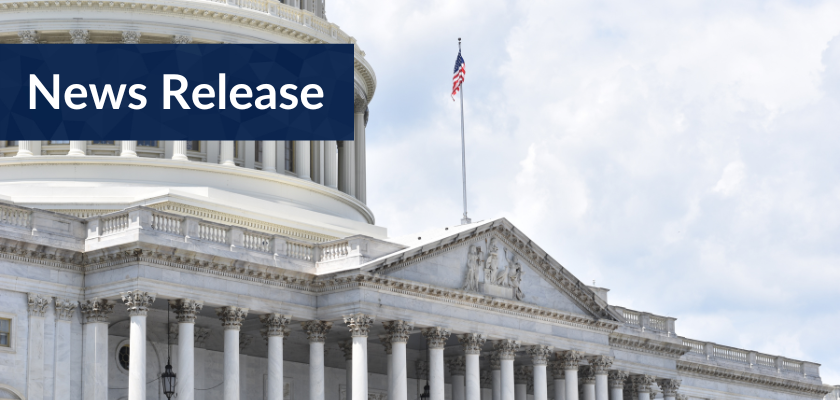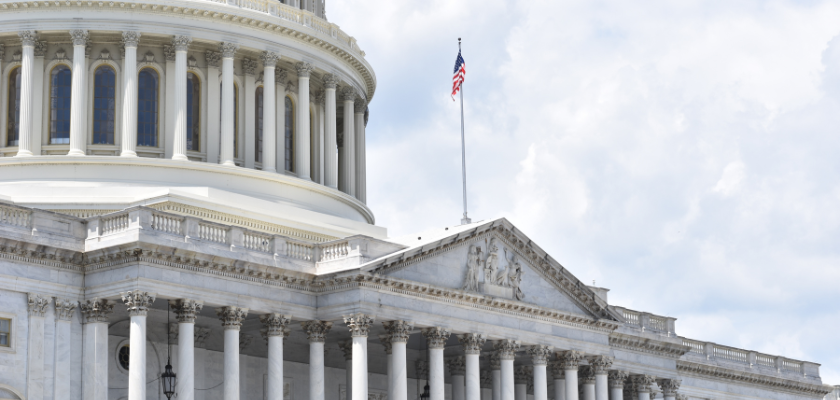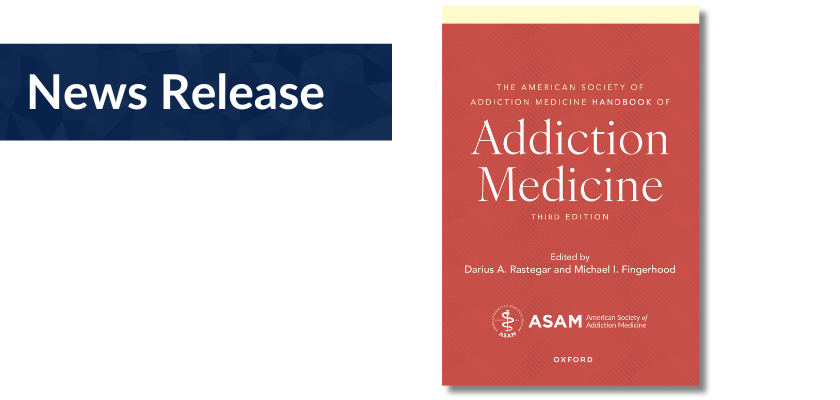News
National Minority Health Month: Health Disparities in SUD and What The Biden Administration is Doing About It
27b70615-d214-4671-8499-2407312a7031.png?sfvrsn=131b083f_1)
April 3, 2024 – April is National Minority Health Month. This observance aims to raise awareness about the health disparities that persist among racial and ethnic minority groups. Health disparities are especially present for Black, Indigenous, and People of Color who have a substance use disorder (SUD) compared to White people.
While the Biden Administration has made addressing health disparities a central health policy priority, health disparities among Black, Indigenous, and People of Color with SUD continue despite these actions.
Here we will review (1) what the data tells us about these health disparities with a close look at the data for opioid use disorder (OUD), alcohol use disorder (AUD), and tobacco use disorder (TUD); (2) the actions the Biden Administration has taken to address them, and (3) what the Administration should do next.
WHAT THE DATA SAYS
Opioid Use Disorder
According to the Substance Abuse and Mental Health Services Administration’s (SAMHSA) annual National Survey on Drug Use and Health (NSDUH) from 2022, almost 8% of American Indian and Alaskan Native (AIAN) people over the age of eighteen had an OUD in the past year – the highest rate among any race measured in the survey. Comparatively, the rate for Native Hawaiians or other Pacific Islanders (NHOPI) was at almost 6%, 3% for Black/African Americans, about 2% each for Hispanics/Latinos and Whites, and a little over 1% for Asians. All of these figures were higher in 2022 for every racial group except for Whites who saw no change from 2021. The numbers increased the most for NHOPI who saw a 229% increase from 2021 figures.
Those numbers get worse when examining deaths from opioid overdoses. According to the Centers for Disease Control (CDC), between 2021 and 2022, age-adjusted rates of drug overdose deaths increased for AIAN non-Hispanic, Black non-Hispanic, Hispanic, and Asian non-Hispanic people. The age-adjusted rates were highest for AIAN non-Hispanic people (56.6 deaths per 100,000 standard population and 65.2, respectively), and lowest for Asian non-Hispanic (subsequently, Asian) people (4.7 and 5.3, respectively). AIAN people experienced the largest percent increase in the age-adjusted rate of drug overdose deaths from 2021 to 2022, with the rate increasing 15.0% from 56.6 to 65.2.
Comparatively, for White non-Hispanic and NHOPI non-Hispanic people, the age-adjusted rates of drug overdose deaths were lower in 2022 than in 2021.
Alcohol Use Disorder
The NSDUH data tells a similar story regarding AUD. In this case, Hispanic/Latino people had the highest rates of AUD in the past year at almost 12% and Asians had the lowest at 6%. Rates for AIAN, Black/African Americans, and Whites came in at 11.5% each. Data for NHOPI was not available due to low precision. Hispanic/Latinos had the highest rate increase with a 5% increase from 2021.
Results from a 2023 research paper showed that AIANs had the highest death burden from alcohol-related deaths, mirroring previous research. The paper also noted that while death rates from alcohol-related causes have leveled among AIANs, the deaths rates have increased significantly among Non-Hispanic Whites, Non-Hispanic Blacks, Asians/Pacific Islanders, and Hispanics.[1]
Tobacco Use Disorder
Although almost every race group experienced a decrease in their tobacco product use from 2021 to 2022, usage among AIANs continued to be the highest among any racial group, hovering around 39%. The rate for Black/African Americans was approximately 26% in 2022, a drop from 29% in 2021. This rate was comparable to the rate for Whites which was also about 26% in 2022.[2] Studies have shown that the all-cause mortality relative risk among current smokers or recent quitters were generally highest for non-Hispanic White individuals than for never smokers, followed by non-Hispanic Black individuals, and were lowest for Hispanic individuals.[3]
In summary, the data shows that racial and ethnic minority groups experience a disproportionate share of the death and disease burden, with this being acutely true for AIANs.
Despite these disparities, we also know that fewer than 25% of people who need any SUD treatment received needed treatment.[4]
BIDEN ADMINISTRATION’S ACTIONS
While the causes behind the substantial death and disease burden, as well as the significant disparity in access to treatment among people of color are grounded in historic policy failures, criminal-legal reform failures, discrimination, inequitable expansion of treatment, and yes, systemic racism – the data alone reinforce an urgent call to action.
Upon taking office in 2021, President Biden signaled his administration’s intent to focus on health equity and close the gaps in disparate health outcomes among racial and ethnic minority groups by signing Executive Order 13985 on his first day in office. This Executive Order ordered a whole-of government approach to advancing equity, including health equity, and ordered each federal agency to conduct an equity assessment.
The Department of Health and Human Services (HHS), which oversees most of the health policy issues related to addressing SUD, issued its first Equity Action Plan in April 2022. While the first plan made no mention of addressing SUD from the standpoint of health equity, the 2023 update to the plan following the issuance of Executive Order 14091 identified “meeting behavioral health needs” as part of HHS’s plan to address health equity. In the plan, HHS noted that the COVID-19 pandemic had exacerbated mental health and substance use challenges for all populations, but disproportionately for racial and ethnic minority populations.
In addition, the Administration has taken several regulatory or executive actions aimed at reducing the burden of SUD, with some of the actions tailored to addressing health disparities among racial and ethnic minorities with SUD. Below are examples of some of those actions:
- Telemedicine flexibilities for prescribing controlled substances: The increasingly lethal illicit drug supply and the COVID-19 pandemic exacerbated challenges faced by people with SUD, especially health disparities among racial and ethnic who have seen a record number of drug overdose deaths. In the early days of the COVID-19 pandemic, the Trump Administration under the Drug Enforcement Administration and SAMHSA took emergency steps to increase telehealth access to addiction medications. That DEA regulatory flexibility has since been extended twice by the Biden Administration as we await a proposed rule from DEA to permanently extend this flexibility. Given that racially or ethnically minoritized groups with OUD are less likely to be offered treatment for OUD,[5] and are more likely to live in communities with a higher prevalence of tightly regulated, but limited methadone-based care,[6] a permanent telemedicine rule has the potential to reduce disparities and increase access to care for these groups. You can find ASAM’s comments on this here.
- Increased reimbursement rates: Studies have found that travel distances to OTPs and clinicians offering buprenorphine are longer for racial and ethnic minority groups compared to Whites.[7] The Administration through the Centers for Medicare and Medicaid Services (CMS) has increased reimbursement rates for opioid treatment programs (OTPs), as well as for office-based treatment and care coordination as a way to make more treatment available and address these gaps in care. The Administration also adjusted payment rates for psychotherapy services and created several new services in a bid to increase the supply of behavioral health clinicians available to see patients and provide more services on the care continuum. You can find ASAM’s comments on this here.
- Section 1115 waiver guidance: Although a wave of reforms has sought to reverse some of the changes brought by the failed War on Drugs, Black people remain overrepresented in jail populations and often stay longer.[8] Additional data note that almost half of people in state prisons meet the criteria for a SUD diagnosis, with traditionally marginalized racial and ethnic populations bearing the brunt of this burden.[9] The Biden Administration released a new Medicaid Section 1115 waiver opportunity for states in April 2023 that allows Medicaid to cover a set of critical, pre-release SUD services to people returning home from jails and prisons. This is the first time in history that Medicaid has been allowed to provide coverage to justice-involved individuals before they are released. California was the first state to have their waiver application approved and many states have since applied.
- Parity regulations: The Biden Administration has proposed rules to strengthen parity regulations for people needing mental health and SUD treatment. Studies report that half of Medicare beneficiaries who are Black and Hispanic (compared to 36% who are White) are enrolled in Medicare Advantage plans, which impose more limitations on accessing SUD care than traditional Medicare. The same study reported that even though relatively few Medicare beneficiaries overall report problems with access to care, a larger share of Black and Hispanic beneficiaries report trouble getting needed care than White beneficiaries.[10] Although Medicare is not subject to the federal parity law, these findings may suggest that these same groups may be experiencing similar issues in other health insurance programs that are subject to federal parity enforcement and these rules if finalized may be able to help dent this disparity. You can find ASAM’s comments on this here.
- Modernizing OTP regulations: SAMHSA finalized regulations in early 2024 that were aimed at expanding access to OUD treatment within OTPs. As noted earlier, some studies have shown that racial and ethnic minority groups must travel further distances than Whites to access OTP services and often live in communities where a buprenorphine treatment provider is not available, thus leaving OTP treatment as the only option for OUD. SAMHSA’s finalized regulations now allow for methadone and buprenorphine treatment initiation via telehealth, expanded take-home dosing, and a removal of stringent patient admissions criteria. You can find ASAM’s comments on this here.
- Smoking Cessation Framework: The new framework from the Biden Administration is the first comprehensive federal regulatory action plan since the inaugural plan that was released in 2010. It is also the first comprehensive federal regulatory framework that uses health equity as a guiding concept. The initiative is also part of the Biden Administration’s Cancer Moonshot Initiative which aims to reduce the cancer death rate by half over the next 25 years. As the framework notes, tobacco-related disparities exist among racial and ethnic minority groups in terms of tobacco product use, exposure, cessation behaviors, and related health outcomes. The Administration intends to use this framework to guide its regulatory actions in this area. You can find ASAM’s comments on this here.
- Request for Information (RFI) on Coverage of Preventive Services: In the fall of 2023, the Administration released an RFI request comments on how to best ensure coverage of over-the-counter (OTC) preventive services at no cost for patients and without a prescription. As noted earlier, tobacco-related disparities are wide-ranging for certain groups. The Administration appears to be of the belief that they have the legal authority to change regulations allowing preventive OTC products for tobacco cessation to be covered without cost-sharing and without a prescription, though this may have limited impact for those tobacco cessation products that are not available OTC. You can find ASAM’s comments on this here.
- Biden’s Pardons for Marijuana Convictions and De-scheduling Recommendation: President Biden exercised his constitutional pardon authority in the fall of 2022 and December 2023 to pardon or grant clemency to thousands of individuals convicted of offenses of simple possession of marijuana, attempted simple possession of marijuana, or use of marijuana in violation of the Federal and Washington, DC laws. Research has shown that despite cannabis policy reform, substantial racial differences in rates of arrest still exist.[11] Additionally, in October 2022, President Biden requested the HHS Secretary initiate an administrative process to review how marijuana is scheduled under federal law. The President noted that “criminal records for marijuana possession have also imposed needless barriers to employment, housing, and educational opportunities…And while white and Black and brown people use marijuana at similar rates, Black and brown people have been arrested, prosecuted, and convicted at disproportionate rates.” While the FDA has recommended that cannabis be de-scheduled, ultimate authority rests with DEA who has yet to announce a decision.
These are just some of the actions the Biden Administration has taken in a follow-up to the President’s Executive Orders on advancing equity. However, given that the needle has not moved significantly in terms of barriers to accessing SUD treatment, while SUD and associated outcomes remain prevalent, there are a number of additional executive or regulatory steps the Biden Administration should consider to continue its work to address disproportionate health outcomes among people of color and advance health equity.
Here are just a few ideas for the Biden Administration:
- Research and Data: The Administration should build on its investments in research and encourage more robust investment in scientific research that aims to evaluate alternative public health approaches to harmful drug use, with a focus on multifaceted drug policy platforms, that include law enforcement practices. The Administration should empower public health agencies to report and widely disseminate data related to substance use and SUD by race and ethnicity and monitor for improved, equitable outcomes. In light of the Office of Management and Budget publishing revisions to standards on federal data on race and ethnicity in Directive 15, a deliberate effort should be made to ensure a smooth transition to compliance in federal data related to addiction policy. Special attention should be paid to identifying clinical protocols that result in racial inequities in treatment delivery—such as in methadone dosages and access to buprenorphine/naloxone.
- Interagency collaboration: The Administration has already taken steps through CMS to cover social determinants of health (SDOH) risk screenings and through the National Institutes of Health’s (NIH) HEAL Initiative to fund SDOH research. As a next step, the Administration should support interagency collaborations and cost-effective programs that address social determinants of addiction with a particular focus on determinants that impact racially and ethnically minoritized people.
- Accreditation and licensing bodies: Incentivize these bodies to work towards improving accountability for evidence-based, patient-centered, and culturally competent addiction care that includes addressing social determinants of addiction.
- Harm reduction: Make regulatory changes to enhance harm reduction efforts, including overdose prevention sites, syringe service programs, exploring other medications for SUD, and drug checking services. The overdose, death, and disease burden from SUD disproportionately falls on the shoulders of racial and ethnic minority groups. Making harm reduction supplies more available may go a long way towards decreasing that burden.
- Treatment in Justice-Involved Settings: We know that SUD disproportionately impacts racial and ethnic minorities in carceral settings. Evidence-based addiction care, including the use of medications for addiction treatment, should be available to all in need, including people in prisons, jails, drug courts, child protection systems, or on probation or parole. The Biden Administration has made strides in this area for correctional facilities under federal control, but more needs to be done to incentivize carceral institutions under state and local control to take similar steps.
- Parity Enforcement: As noted earlier, the Biden Administration has released a proposed rule on parity but has not yet finalized the rule. Finalizing this rule would go a long way towards the vigorous enforcement of the parity law and work to address systemic health disparities among racial and ethnic minorities, particularly for people with mental health conditions and SUD.
- Workforce: The Administration should continue its record of increasing reimbursement rates for SUD treatment services and fund programs that ensure a diverse and inclusive healthcare professional workforce. There is a longstanding, critical shortage of clinicians with experience treating patients with SUD, particularly clinicians from diverse backgrounds. This exacerbates existing racial and ethnic disparities in treatment, and these two policies could help drive clinicians to the workforce and keep them there.
- Maternal and Child Health: Punitive policies and practices are disproportionately applied to and disparately impact pregnant and postpartum people of color.[12] and deter them from seeking prenatal or addiction care. The Biden Administration should provide strategic guidance from federal agencies to incentivize states to implement non-punitive, evidence-based, public health-driven approaches for SUD in pregnant and postpartum people. Federal agencies should issue guidance with particular attention to how states should define the term “affected by,” with clarification that addiction medications, including medications for OUD, are neither considered “prenatal drug exposure” nor should be included under any perceived Child Abuse Prevention and Treatment Act (CAPTA) requirements. Any legislative reauthorization of CAPTA should also include such clarification.
- Alcohol Use Disorder: The Food and Drug Administration has reported drug shortages of naltrexone hydrochloride, a medication used to treat AUD. As research has shown that certain racial and ethnic minorities bear a disproportionate share of the death and disease burden from alcohol-related causes, the Administration should work expeditiously to investigate the causes of this shortage and rectify it.
- Tobacco Use Disorder: As expressed earlier in this post, TUD has a disproportionate impact on people of color. As expressed in ASAM’s comments to the Administration’s Smoking Cessation Plan, the federal government should take steps to remove barriers to OTC TUD medications so that more people have access to them. Finally, the Administration should move expeditiously to finalize proposed rules on banning menthol cigarettes and flavored cigar rules. ASAM just recently joined 100+ groups calling on the Administration to finalize the rules.
As we take stock of National Minority Health Month, ASAM acknowledges that there are significant health disparities among people of color living with a SUD. It is why the Society has now published three public policy statements on Advancing Racial Justice and Health Equity to recognize, understand, and then counteract the adverse effects of America’s historical, pervasive, and continuing systemic racism, specifically with respect to addiction prevention, early intervention, diagnosis, treatment, and recovery. We also acknowledge that while the Administration has taken several steps to address these health disparities, there is still critical work to be done to ensure that traditionally marginalized racial and ethnic groups have access to the health care that everyone deserves.
[1] Karaye IM, Maleki N, Yunusa I. Racial and Ethnic Disparities in Alcohol-Attributed Deaths in the United States, 1999-2020. Int J Environ Res Public Health. 2023 Apr 20;20(8):5587. doi: 10.3390/ijerph20085587. PMID: 37107870; PMCID: PMC10138663.
[2] Substance Abuse and Mental Health Services Administration. (2023). Key substance use and mental health indicators in the United States: Results from the 2022 National Survey on Drug Use and Health (HHS Publication No. PEP23-07-01-006, NSDUH Series H-58). Center for Behavioral Health Statistics and Quality, Substance Abuse and Mental Health Services Administration. https://www.samhsa.gov/data/report/2022-nsduh-annual-national-report
[3] Jihyoun Jeon, Maki Inoue-Choi, Yoonseo Mok, Timothy S. McNeel, Jamie Tam, Neal D. Freedman, Rafael Meza, Mortality Relative Risks by Smoking, Race/Ethnicity, and Education, American Journal of Preventive Medicine, Volume 64, Issue 4, Supplement 1, 2023, Pages S53-S62, ISSN 0749-3797, (https://www.sciencedirect.com/science/article/pii/S0749379722005712)
[4] Substance Abuse and Mental Health Services Administration. (2023). Key substance use and mental health indicators in the United States: Results from the 2022 National Survey on Drug Use and Health (HHS Publication No. PEP23-07-01-006, NSDUH Series H-58). Center for Behavioral Health Statistics and Quality, Substance Abuse and Mental Health Services Administration. https://www.samhsa.gov/data/report/2022-nsduh-annual-national-report
[5] ASAM. Public Policy Statements on Advancing Racial Justice and Health Equity
In the Context of Addiction Medicine. Available at https://www.asam.org/advocacy/national-advocacy/justice.
[6] Ibid
[7] Amiri S, Panwala V, Amram O. Disparities in access to opioid treatment programs and buprenorphine providers by race and ethnicity in the contiguous U.S. J Subst Use Addict Treat. 2024 Jan;156:209193. doi: 10.1016/j.josat.2023.209193. Epub 2023 Oct 27. PMID: 37890620.
[8] Pew Charitable Trusts. Racial Disparities Persist in Many U.S. Jails. Published May 16, 2023. Accessed April 4, 2024. https://www.pewtrusts.org/en/research-and-analysis/issue-briefs/2023/05/racial-disparities-persist-in-many-us-jails
[9] Bureau of Justice Statistics: An Office of the US Department of Justice, Alcohol and Drug Use and Treatment Reported by Prisoners. Published July 2021. https://bjs.ojp.gov/sites/g/files/xyckuh236/files/media/document/adutrpspi16st.pdf
[10] Kaiser Family Foundation. Racial and Ethnic Health Inequities and Medicare. Published February 2021. Accessed April 4, 2024. https://files.kff.org/attachment/Report-Racial-and-Ethnic-Health-Inequities-and-Medicare.pdf.
[11] American Civil Liberties Union. A Tale of Two Countries - Racially Targeted Arrests in the Era of Marijuana Reform. Published 2020. Accessed September 11, 2022. https://www.aclu.org/sites/default/files/field_document/tale_of_two_countries_racially_targeted_arrests_in_the_era_of_marijuana_reform_revised_7.1.20_0.pdf



.png?sfvrsn=df8da40e_1)


